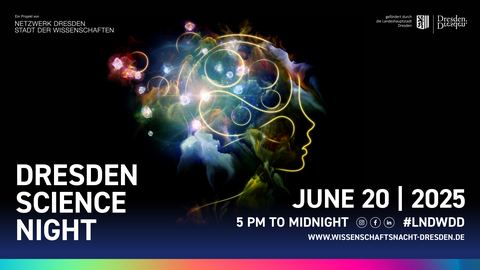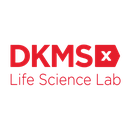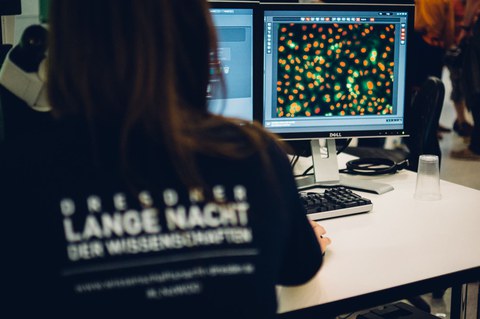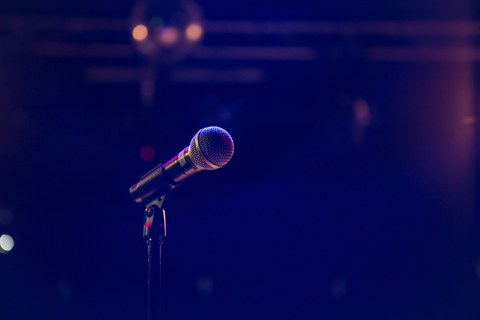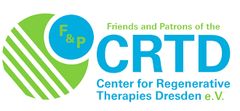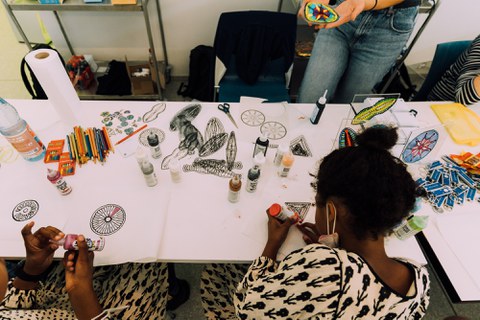2025 Dresden Science Night at CMCB
Join us for the Dresden Science Night at the Center for Molecular and Cellular Bioengineering (CMCB) of TU Dresden.
Scientists from the B CUBE - Center for Molecular Bioengineering, Biotechnology Center (BIOTEC), the Center for Regenerative Therapies Dresden (CRTD), and partner institutions from the Johannstadt campus are looking forward to get you excited about Life Sciences. You can expect various hands-on experiments, lectures, exhibitions, videos, science slam, and more!
All events will take place at the CRTD:
Fetscherstraße 105
01307 Dresden, Germany
You can find more information about the program below.
Table of contents
Sponsor
Program (5 pm - midnight)
Booths
Presenters:
SaxoCell
Description:
Step into the world of living medicines with a captivating short film that brings CAR-T cell therapy to life, showing how your very own cells can be transformed into powerful treatments. Test your knowledge in our interactive immune cell quiz and discover the unique traits of different cell types. Ever wondered which immune cell is most like you? Come find out!
Presenters:
Bringmann Group, Biotechnology Center (BIOTEC)
Description:
Ever wondered if worms dream? Join us for a captivating exploration, where we delve into the mysterious world of sleep using the remarkable model organism, the “Fadenwurm” called: C. elegans. We'll unveil the complicated mechanisms behind sleep and its regulation. Discover how these tiny organisms help us shed light on one of life's most fascinating mysteries in a way that's both accessible and engaging for all. Don't miss this chance to peek into the world of C. elegans and unlock the secrets of sleep!
Presenters:
Honigmann Group, Biotechnology Center (BIOTEC)
Description:
Imagine your body as a bustling city, with roads and pathways connecting different neighborhoods. Now, picture tight junctions as the gatekeepers of these pathways, ensuring that only the right molecules can pass through, while keeping unwanted guests out. We'll dive deep into these microscopic gatekeepers and discover how they play a crucial role in maintaining the health and function of our bodies. Join us and discover more about the structure of the gatekeepers and why they're so important for our cells.
Presenters:
TUD iGEM Team
Description:
Get to know the 2025 iGEM team from TU Dresden. This team of over 15 students is participating in the world's largest synthetic biology competition. Their research project focuses on developing an mRNA detection system in yeast. With this work, they aim to contribute valuable techniques that could support scientists in advancing biological research worldwide.
Get to know cutting edge research explained with simple LEGO bricks!
Presenters:
Sáenz Group, B CUBE - Center for Molecular Bioengineering
Description:
What separates a living cell from the outside world? The answer is fat! Join us, as we venture inside the cell and see what and how the oily boundary between life and death is created.
Presenters:
Calegari Group, Center for Regenerative Therapies Dresden (CRTD)
Description:
Finding our way in new places isn’t always easy — and how well we do it depends on our age, our attention, and, of course, our brain! In the Calegari lab, the researchers study how these factors are connected. With enough motivation, even mice can solve complex navigation tasks. But what looks simple from the outside can be a real challenge from a mouse’s point of view!
Want to see for yourself? Take the controls, guide an (electric) mouse through our maze, and maybe even earn a little reward!
Talks
The following talks take place in Auditorium left at the CRTD.
Speaker:
Prof. Dr. Jared Sterneckert, Sterneckert Group, Center for Regenerative Therapies Dresden (CRTD)
Description:
Some diseases like motor neuron disease are very severe, and very little can be done to help. However, one of the most exciting aspects of our research is the attempt to develop a new treatment. If you were to pretend that you are a neurologist and a scientist, how could modern biotechnology (stem cells) be used to better understand the cause of the disease? How can we identify a new treatment? Here, we will illustrate the ideas and thought processes that we use to achieve these objectives.
Speaker:
Maria Pavlou, Ader Group, Center for Regenerative Therapies Dresden (CRTD)
Description:
Photoreceptors and retinal pigment epithelium - cells critically required for visual processing - are lost in retinal degenerative diseases leading to vision impairment or even blindness. A therapeutical option to treat such diseases would be replacing the lost cells with new functional ones. In the Ader Lab, we are investigating how to generate donor cells appropriate for transplantations and how the stage of the disease influences transplantation outcome.
Speaker:
Prof. Dr. Mareike Albert, Albert Group, Center for Regenerative Therapies Dresden (CRTD)
The lecture will be given in German.
Speaker:
Team of SaxoCell, one of the BMBF's Clusters4Future
Team of the Hannah Arendt Institute for Totalitarianism Studies e. V.
Why are medical innovations often met with skepticism or concern? Experts from medicine, ethics, the social sciences and the humanities explore the hopes, fears, and tensions that surround new developments – and how emerging technologies can both inspire optimism and raise doubts.
This event is a collaboration between the Hannah Arendt Institute for Totalitarianism Studies e. V. and the future cluster SaxoCell.
The online event can be accessed using the following link: Zoom Link
Note: this podium discussion will be held in German
Science Slam
Time for perhaps the coolest form of science: The Science Slam
Entertaining, lively, and vivid presentations of various life science research topics, each in just 5 minutes. Clear the stage for the scientists who take up the challenge!
As the audience, you and the jury can decide who wins the Science Slam.
Time: 9:30 pm - 11:00 pm
Place: Auditorium
Science Slam Sponsors
Kids Program
In addition to the lectures, booths and videos for children, there will various activities in the kids' corner.
A scavenger hunt! ️🕵️♂️🔍
Kids can go on an adventure throughout the building, solving tasks at various stations. Along the way, they will collect numbers for a secret code. 🔢🧩
Once all the numbers are there, it's time to crack the code! ️🗝️🧰 Will you open our little treasure chest? 🎁 Get ready for fun and games, and maybe even learn a bit of biology! 🧬🌿
Presenters:
Axolotl Facility
Description:
Hi kids, maybe you've dreamed of seeing a real axolotl? Now's your chance!
Each tour lasts 10 minutes and is suitable for children aged 6-12.
Open: 5:30 - 8:30 pm
Presenters:
Sandoval-Guzmán Group, Center for Regenerative Therapies Dresden (CRTD)
Description:
Axolotls are wonderful creatures – with their shyness and quiet charisma, they have so much to teach us about resilience and the natural ability to replace damaged or missing cells. Native to Mexico, these unique salamanders are best known not only for their feathery gills and constant smile, but also for their astonishing power to regenerate entire body parts. Whether you’re drawn in by their quirky appearance or amazed by their healing abilities, axolotls are a fascinating example of nature’s creativity and power.
Presenters:
Ader Group, Center for Regenerative Therapies Dresden (CRTD)
Karl Group, Center for Regenerative Therapies Dresden (CRTD) and German Center for Neurodegenerative Diseases (DZNE)
Description:
The eye is the organ of our most precious sense. Learn about its structure and how it changes in degenerative diseases. What are retinal organoids or induced pluripotent stem cells and how can they help researchers to understand diseases and develop therapies? What challenges do blind people face? Come in and challenge yourself in our darkroom experience. Explore the eye and learn how complex of an organ it is with the walk-in eye model. But most of all, talk to our scientists and learn more about our research.
Presenters:
Schlierf Group, B CUBE - Center for Molecular Bioengineering
Description:
Join us in discovering the amazing world of molecular movements inside cells! Picture tiny particles and molecules always on the move, either pushed along actively or just drifting around because of heat. Scientists have ways to watch it in action!
Just like watching a busy highway system inside a cell, with molecules zipping around like cars on the road, we can watch how DNA molecules travel inside and between neighboring cells. We'll also show you how heat affects what happens inside a cell.
Presenters:
Schroeder Group, Biotechnology Center (BIOTEC)
Description:
Join us for a hands-on exploration of the fascinating world of computational biology! We’ll share our latest findings on antibiotic resistance, cancer research, and drug development.
In addition to learning about cutting-edge science, we'll be getting our hands dirty with some fun activities. We'll work together to fold proteins and learn about the important roles they play in our bodies. And for the younger scientists in the crowd, we'll have games that teach them how drugs fight diseases.
Presenters:
Becker Group, Center for Regenerative Therapies Dresden (CRTD)
Description:
Discover the amazing world of zebrafish! See adult and larval fish, watch how they develop from an egg to a free-swimming baby fish, and explore glowing fluorescent fish under the microscope. Try collecting fish eggs yourself, and learn how zebrafish help scientists understand regeneration and development. Experience science up close – fun for all ages!
Presenters:
Diez Group, B CUBE - Center for Molecular Bioengineering
Description:
Inside our cells, tiny molecular machines called motor proteins work like delivery trucks. They travel along intracellular highways known as microtubules to get rid of waste, deliver nutrients and all the essential components the cell needs. Watch how these motors switch tracks to navigate around obstacles and keep everything running smoothly! Explore how scientists use the interactions between these motors and roadblocks to design miniature devices for detecting signs of diseases.
Presenters:
Politi Group, B CUBE - Center for Molecular Bioengineering
Description:
Many insects and spiders have structures with unique features that give them incredible abilities. These structures are made of building blocks that organize themselves into complex patters at different levels to eventually function together. Our group studies one of the nature’s most abundant building block called chitin to understand the principles of its organization and bio-chemi-physical interactions.
Immerse yourself in the intricate structures of nature as we delve into the secrets of chitin and its role in shaping the world of arthropods. Learn how to distinguish between male and female spiders, and even create your own souvenir to take home!
Presenters:
Kröger Group, B CUBE - Center for Molecular Bioengineering
Description:
Algae are often only perceived as an annoying algae bloom or slime on stones, but they are one of the most ecologically important organisms on Earth. Diatoms are the most abundant microscopic algae that produce one-fifth of the oxygen we breathe and have beautiful cell walls made of glass (SiO2). Under the microscope, you can marvel at diatoms from all over the world (including Dresden), create your own diatom window art, and learn interesting facts about their role in nature and technology.
Presenters:
Taubenberger Group, Biotechnology Center (BIOTEC)
Description:
Ever wondered just how stiff our body's tissues are? Dive into the fascinating world of tissue mechanics and uncover the methods used to measure stiffness across various scales. From the nanoscale to the millimeter scale, we'll showcase cutting-edge techniques that scientists use every day. Get up close with a self-built model of an atomic-force microscope, and witness firsthand the mechanical probing of a gut tissue from a fruit fly through a captivating video. But the fun doesn't stop there! Test your skills with our interactive quiz, where you'll touch and probe a gel that mimicks the stiffness of different tissues. Can you guess which one you're feeling? Join us for an eye-opening exploration of tissue mechanics!
Presenters:
Sieweke Group, Center for Regenerative Therapies Dresden (CRTD)
Description:
Step into the fascinating world of the human body and explore the amazing work of macrophages! Discover where these cells live and how they work to keep us healthy. Watch mesmerizing videos and see live macrophages up close through a microscope. Get creative with our interactive children's games! Draw your own macrophage glove and use it to eat harmful bacteria and organisms. Or sculpt your very own macrophage using Play-Doh.
Don't miss out on this exciting opportunity to learn more about the incredible world inside our bodies!
Presenters:
Andreev Group, Center for Regenerative Therapies Dresden (CRTD)
Description:
Join us for a fun and educational day all about bone health! Discover how osteoblasts and osteoclasts work together to keep our bones strong—and what happens when that balance is disrupted in arthritis. Learn why calcium is essential for healthy bones, how astronauts deal with bone loss in space, and how a balanced diet helps protect your skeleton.
Kids and adults can enjoy games and hands-on activities, including a chance to see real bone cells under the microscope.
Come and explore the fascinating world of your bones!
Presenter:
Students from the Martin-Andersen-Nexö-Gymnasium (MANOS)
Description:
Students from Martin-Andersen-Nexö-Gymnasium (MANOS) present exciting and informative experiments showcasing the wonders of biological, chemical, and physical phenomena in the natural sciences. Get ready for explosions, uncovering minute details, and witnessing the creation of vibrant structures.
Presenters:
Adams Group, Cluster of Excellence Physics of Life (PoL)
Description:
Water is the solvent of life and its interaction with larger molecules is vital. Yet, some molecules repel water. How does this impact the organization within the cell? Such interactions cause liquid-liquid phase separation, where special water droplets enriched in proteins form. Here, we will show how liquid-liquid phase separation occurs and how we can use invisible lasers to investigate water-protein interactions.
Presenters:
Brugués Group, Cluster of Excellence Physics of Life (PoL)
Description:
Biological processes are complex and dynamic. Because of their microscopic nature, their beauty is usually invisible to the naked eye. To bridge this gap, we present a mixed reality-based interactive viewer using Apple Vision Pro to explore multi-dimensional biological images of cells and tissues. We provide an immersive experience that conveys the wonder of living systems and increases public engagement with life sciences and biophysics.
Presenters:
Jahnel Group, Cluster of Excellence Physics of Life (PoL)
Description:
Usually we use our pipetting robot in the lab to mix liquids. But today you can use it to print your own picture!
Design your picture on our laptops and let our robot paint it for you from single colored droplets.
Presenters:
Yang Group, Cluster of Excellence Physics of Life (PoL)
Description:
Discover the world of microscopy! We will be showing some bioimages on our Apple Vision Pro devices (VR)
Presenters:
Barriga Group, Cluster of Excellence Physics of Life (PoL)
Description:
We will explain how the frog (the animal model in the lab) develops from an egg to a full adult and how cell migration and environment properties are important in development. We will have some cool frog embryos, videos of moving cells, activities to see how the physics influence cell movement and development puzzles. You can also join us to make your own jumping frog origami!
Presenters:
Doyle Group, Cluster of Excellence Physics of Life (PoL)
Description:
How does your body move so effortlessly – and how do scientists work to recreate that? In this hands-on workshop, craft a moving hand model while learning about the materials and techniques that mimic the flexibility and movement of real tissues. See how nature’s designs and tissue engineered solutions compare to alternatives like robotic prostheses, and discover how scientists and engineers are working to create materials that heal, move, and sense like real body parts!
Talks
The following program takes place in Auditorium right at the CRTD.
The program is suitable for kids 8-12 years old.
Speaker:
Dr. Judith Konantz
Description:
The human body is truly amazing! We can see, smell, hear, walk, think, and taste. Plus, we have the ability to heal small cuts and bruises all by ourselves, like when we scrape our knee. However, when it comes to bigger injuries, we need help from doctors. They can work wonders, but if a finger gets completely cut off, it can only be saved if it's sewn back on quickly. It's even harder with a whole arm! Our bodies can't naturally regrow a whole finger or arm on their own. That's where the axolotl and zebrafish come in. Dr. Judith Konantz, a biologist, will explain how these amazing creatures are connected to our ability (or inability) to regrow body parts.
Note: The lecture will be held in German.
Speakers:
Volunteers of the CRTD (FSJ)
Attention, aspiring young researchers aged 6 – 12 years! Get ready to embark on an exciting journey with our children's quiz, where you'll answer thrilling questions, dive into research, and discover fascinating new knowledge.
Join the Kids’ Quiz and tackle the tasks alongside other participants. Get to know science from a completely different perspective and look forward to exciting prizes!
Note: The quiz will be held in German.

